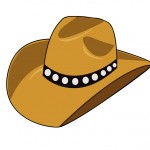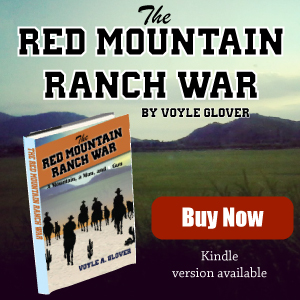Author Archive
Where are the Good Westerns?
That depends on what you believe a “good” western fiction story should be. Some believe a good western is an “authentic” western. They are convinced that the writer was obligated to “tell it like it was” and not add the glitter and glamour, nor romanticize. They seem to forget that the main reason so many writers of western fiction became popular was because they did add some of those elements to their stories. Zane Grey was one of the first to brush broad colors across his canvas and inflame the imaginations of tens of thousands of readers. James Fenimore Cooper did it a generation or three before him. Others are firm believers that a good western ought to be decent, without the sex, without the language and coarseness and vulgarities that were, of course, prevalent. There is much to their argument and frankly, where the western story is littered with corpses and sex, many minds simply become turned off and the writer’s story is ultimately one of those corpses.
The Dean of Western Fiction, Louis L’Amour once said that a writer of westerns should simply tell a good story. Of course, he did that better than just about anyone else when it came to writing westerns. That really is the essence of it all: telling a good story. A writer who wishes to have a following, to have readers who desire to read the next western that comes from the writer’s pen, has to tell a good story. That, of course, involves some mechanical skills, but mostly, it involves the writer’s imagination, his or her ability to create scenes that are acceptable to the reader, scenes which enhance the story and make the reader want to turn the page.
Ultimately, every reader will decide for himself what a good western story is or should be, and they will do that by not purchasing certain books that don’t measure up.
Stetson Hats: The Boss of the Plains Hat
 The Stetson Hat was created by John B. Stetson. During the Civil War in 1862, Mr. Stetson, having no desire to die an untimely death, headed for Colorado to pan for gold long after John Sutter’s fabulous discovery of gold in California. He’d been working as an apprentice milliner but had grown weary of the work. After not finding much gold, Stetson tried his hand at trapping and found it to be a bit more profitable. It would turn out to be the genesis for an idea that would make him rich.
The Stetson Hat was created by John B. Stetson. During the Civil War in 1862, Mr. Stetson, having no desire to die an untimely death, headed for Colorado to pan for gold long after John Sutter’s fabulous discovery of gold in California. He’d been working as an apprentice milliner but had grown weary of the work. After not finding much gold, Stetson tried his hand at trapping and found it to be a bit more profitable. It would turn out to be the genesis for an idea that would make him rich.
Stetson made himself a large, wide-brimmed hat from beaver pelts sewn together. It was a utlilitarian hat in that it not only provided a large, sombrero-like cover that shaded the entire face, but it doubled as a water bowl (and some say, was often used for hot stew).
The hat became popular with some of the miners and trappers, so after selling a few, he left Colorado for Philadelphia where, with a mere $100, he started making hats in earnest. But, that first year was pretty dismal and he neary went bankrupt since he only managed to sell about a dozen hats.
Suddenly, Stetson’s hat caught on with the cowboys who spent all their days under blistering hot suns, and with the gold miners who sweated under the hot sun day after day, and he found himself deluged with orders. The hat became known as the “John B.” or as it was popularly called, “The Boss of the Plains,” and his hats became as popular as the Colt revolver. At his death in 1906, the company was selling hats internationally and sales were reported in excess of 2 million hats a year. Beaver top hats became quite the rage in New York City and even in Paris and London and other European cities.
Today, the company pulls in more than $200 million a year in sales.
Below is a video that shows some rare, vintage film of the making of a Stetson hat, circa 1920’s.
[wpramazon asin=”B0000AUYUZ”]
steroids 101 click los angeles divorce lawyers chicago limo service cheap movers los angeles joomla template gezondheidsnet.nl principaux muscles du corps humain apotheke wasserbillig metabolismo tv welke whey bodybuilding shipping best muscle building steroid nicole bodybuilder bodybuilding trx winfield junior force golf clubs l carnitine l tartrate bodybuilding Classic Bodybuilding: Anton Eurenius k_pa tillv_xthormon i sverige KralligWestern Books|The Old West in Science Fiction
Western Sci-fi or science fiction westerns have been somewhat rare, and have not been totally accepted by true western fiction affectionados. There are some who have espoused ideas about aliens visiting the Old West. Whether or not aliens actually visited the west during the years of the gunfighters and the Indian wars is an intriguing question.
One fascinating movie of recent vintage was Cowboys & Aliens It had all the flavor of an Old West movie, plus the imaginative thrill of a good sci-fi movie.
Gene Autry, the classic western fiction movie star in the early days of “westerns” learned that. (Below is a movie starring Autry in an early attempt.)
Some have said that every sci-fi is, at heart, a western. The series Firefly
certainly carried that flavor. Another book that carries the flavor of a western, at least in terms of good guy bad guy aspects, is the book Millennium Soldier.
[wpramazon asin=”096285316X”]
info buy cheap testosterone injections axiolabs methanoplex 10 mg schering plough usa pctonline isis pharmaceuticals steroids diazepam kopen sante минск bivirkninger ved anabole steroider stabol femmegym tabex usa etizolam and alcohol overdose best study drugs modvigil onde comprar winstrol Bodybuilding – d bol A lifestyle http://steroids-usa.net/ steroids for sale steroids-usa.netAmerica’s Love Affair with Western Fiction Began with James Fenimore Cooper
 Western Fiction Impacted America as early as 1813
Western Fiction Impacted America as early as 1813
Westerns have been with us (Americans) since at least 1813 with the release of Daniel Bryan’s The Mountain Muse, and in James Paulding’s The Backwoodsman in 1818. But, the man who would impact American culture more than any man for generations was James Fenimore Cooper, who began life in the new America in 1789 in New Jersey. Back then, one didn’t have to wander very far to be in the “wilderness.”
While his early days were in New Jersey, after the end of the Revolutionary War, Cooper’s father bought land in Central New York. Cooper was just ten years of age. The family house his father built was in the wilderness on the shore of Otsego Lake, an area in central New York that was surrounded by the Iroquois of the Six Nations. It would later become Cooperstown, New York. His father would become a United States Senator.
These years of close proximity to the wilderness, the “leather-stocking,” bearded hunters, and the wild, savage Indians that roamed the region colored Cooper’s mind. He would pass those images along to the world with his many tales, the most famous of which would be The Last of the Mohicans, written in 1826 as part of the well-received Leatherstocking Tales, a series of 4 books spaced years apart. Life was an adventure and Cooper was as wild and adventurous as the land in which he was born. Cooper’s father was very well off, enough to send him to Yale. Alas, after 3 years, Cooper was expelled when he blew up the door to a fellow student’s room. Apparently, Cooper was a bit of a rebel in his teen years.
Cooper decided that college was not for him so at the tender age of 17, he picked up work in 1806 as a sailor, signing aboard a merchant ship. He managed, by 1811, to obtain the rank of midshipman in the fledgling United States Navy. Cooper obtained an Officer’s Warrant signed by none other than Thomas Jefferson.
His years in the wilderness and later, the navy, would greatly influence his writings. He was perhaps the world’s first true “western fiction” writer. True, there were others, such as Paulding, but none of the others had the richness, the reality and the sense of “being there” that Cooper conveyed. Cooper wrote a lot of history (such as The History of the United States Navy, which today is considered the authoritative work for that history). He even did some political writings.
But, nothing has endured like his book, The Last of the Mohicans. It endured because it captured the very best elements essential to a good novel. It had adventure, passions of fear, love and hate, and best of all, it had a memorable, bigger-than-life hero. Some things just don’t change and if you’re honest, you’ll agree that you enjoy those stories that have good prevailing over evil, and if the hero is of heroic proportions, even if flawed, that makes the story memorable.
This was one of the reasons why the Louis L’Amour westerns were so popular. It wasn’t that he gave beautiful descriptions of the land in which he placed his characters. It wasn’t that there was good and evil. The reason his novels were so popular was because L’Amour brought to life a protagonist who was as strong as the land in which he found himself. Readers always loved his strong, virile heroes who were willing to meet the challenges of the Old West head on.
